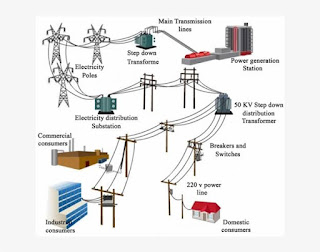BASIC ELECTRICAL CONCEPTS
Basic electrical concepts
In each plant, the mechanical movement of different equipments is caused by an electric prime mover (motor). Electrical power is derived from either utilities or internal generators and is distributed through transformers to deliver usable voltage levels.
Electricity is found in two common forms:
• AC (alternating current)
• DC (direct current).
Electrical equipments can run on either of the AC/DC forms of electrical energies. The selection of energy source for equipment depends on its application requirements. Each energy source has its own merits and demerits.
Industrial AC voltage levels are roughly defined as LV (low voltage) and HV (high voltage) with frequency of 50–60 Hz. An electrical circuit has the following three basic components irrespective of its electrical energy form:
• Voltage (volts)
• Ampere (amps)
• Resistance (ohms).
1. Voltage is defined as the electrical potential difference that causes electrons to flow.
2. Current is defined as the flow of electrons and is measured in amperes.
3. Resistance is defined as the opposition to the flow of electrons and is measured in ohms.
All three are bound together with Ohm’s law, which gives the following relation between the three:
- V = I × R
(a) Power
In DC circuits, power (watts) is simply a product of voltage and current.
- P =V × I
For AC circuits, the formula holds true for purely resistive circuits; however, for the following types of AC circuits, power is not just a product of voltage and current.
Apparent power is the product of voltage and ampere, i.e., VA or kVA is known as apparent power. Apparent power is total power supplied to a circuit inclusive of the true and reactive power.
Real power or true power is the power that can be converted into work and is measured in watts
Reactive power If the circuit is of an inductive or capacitive type, then the reactive component consumes power and cannot be converted into work. This is known as reactive power and is denoted by the unit VAR.
(b) Relationship between powers
- Apparent power (VA) = V × A
- True power (Watts) = VA × cosφ
- Reactive power (VAR) = VA × sinφ.

Comments
Post a Comment